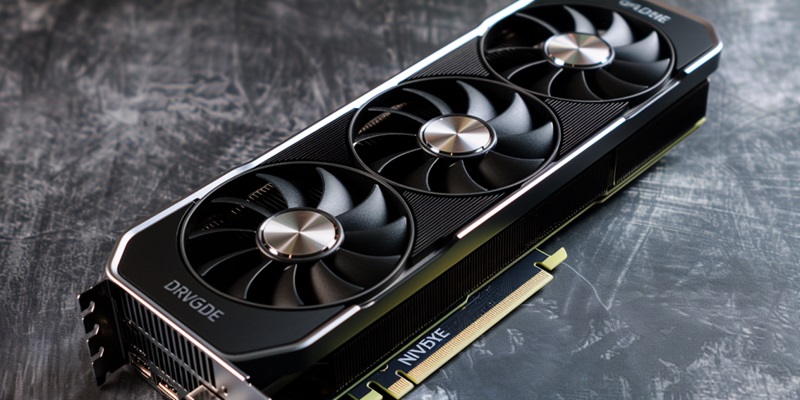The tech community has been eagerly awaiting new budget-friendly GPUs from AMD, especially given the buzz surrounding the RDNA 3 architecture. However, recent reports suggest that the much-anticipated RX 7400 and RX 7300 may not make their debut anytime soon, casting a shadow of doubt over their potential release. AMD enthusiasts and budget-conscious gamers had their hopes pinned on these more affordable models to make high-performance gaming and content creation accessible to a broader audience.
Disappointing News for Budget GPU Seekers
Recent chatter in the tech world had indicated that AMD might expand its RDNA 3 lineup with more affordable GPU options. This created a wave of excitement among budget-conscious gamers and PC builders. However, Benchlife, a prominent Chinese tech site, has reported that there is no sign of these GPUs in the development pipeline. The RX 7400 and RX 7300, which many had hoped would provide a more economical entry point into the RDNA 3 ecosystem, are conspicuously absent from any immediate plans.
The lack of development moves highlighted by Benchlife suggests that AMD’s add-in board (AIB) partners are not working on these budget models. This revelation is particularly disheartening as it reduces the likelihood of seeing these GPUs in the market anytime soon. Adding to the dismay, major OEMs like Dell, HP, and Lenovo have not confirmed any details about integrating these GPUs into their prebuilt PC offerings. Consequently, this indicates that the expected budget-friendly graphics cards will neither hit the consumer market nor be featured in prebuilt PCs from major brands anytime soon.
What the Alternatives Are Saying
In the absence of new AMD budget GPUs, the focus turns to what alternatives are currently available or potentially on the horizon. Competitors like Nvidia have been making strides with their own budget-oriented GPUs, filling the gap left by AMD. Models like Nvidia’s GTX 1650 and GTX 1660 Super continue to dominate the lower-end market, offering viable alternatives for those not willing to wait for AMD’s next move. This pivot to alternatives places Nvidia in a favorable position to capitalize on budget-conscious consumers seeking new graphics card options.
This void in the market leaves a significant portion underserved, as budget-friendly GPUs play a crucial role in making PC gaming and content creation accessible to a broader audience. Consumers might feel compelled to look towards second-hand markets or older GPU models, which could lead to increased prices for more established, albeit older, technologies. The lack of new budget models from AMD compounds the problem, as it forces potential buyers to rely on existing, sometimes inadequate, resources or to turn to higher-priced options from competitors.
The Shift Toward RDNA 4
Interestingly, the industry appears to be pivoting its focus towards AMD’s next-gen architecture, RDNA 4. Reports suggest that RDNA 4 could debut as early as late 2024 or early 2025. This anticipated launch is likely to shift momentum towards future-proofing their GPU line-up, with AMD and its partners investing substantial resources into the development of RDNA 4 cards. This strategic shift hints at AMD possibly prioritizing the future over the present, aiming to introduce groundbreaking advancements on a more extended timeline.
This strategic pivot signifies that AMD might be choosing to channel its resources into developing cutting-edge technologies rather than fleshing out the RDNA 3 lineup with budget models. While this could lead to more advanced GPUs in the future, it leaves potential RDNA 3 adopters in a lurch — with no clear budget-friendly options emerging on the horizon. The anticipation surrounding the RDNA 4 series suggests AMD’s intention to leapfrog current barriers, potentially leaving behind a segment of the market that eagerly awaited cost-effective, high-performing RDNA 3 GPUs.
The Reality of Speculation
Earlier speculations about the RX 7400 and RX 7300 were based on the assumption that AMD would continue to flesh out its RDNA 3 lineup as it had with previous generations. Expectations were high that AMD would introduce competitive, budget-friendly options to capture market segments considering an upgrade. Yet, the absence of any solid development from AIB partners or significant confirmations from OEMs signals that these speculations were overly optimistic. This disappointing revelation underscores the reality that not all rumors translate into actual product launches.
The speculation-reality gap has often been stark in the tech industry, and AMD’s situation with RDNA 3 budget GPUs is no exception. Enthusiasts and consumers alike are often left grappling with rumors and leaks, trying to discern which information to trust amid the noise. The clarity, or lack thereof, surrounding the anticipated release of budget RDNA 3 GPUs serves as a stark reminder of the volatile and unpredictable nature of tech advancements and product pipelines.
Market Implications and Strategic Realignment
The tech community has been on the edge of their seats, eagerly anticipating the launch of new budget-friendly GPUs from AMD, particularly with the hype surrounding the RDNA 3 architecture. However, recent information has put a damper on these high expectations. Reports now indicate that the highly awaited RX 7400 and RX 7300 graphics cards may not be hitting the market anytime soon. This news casts a cloud of uncertainty over their potential release dates.
For AMD enthusiasts and gamers with tight budgets, this development is particularly disheartening. These individuals had pinned their hopes on the more affordable yet high-performing RX 7400 and RX 7300 to democratize high-performance gaming and content creation. The RX 7400 and RX 7300 were expected to broaden access to advanced graphics capabilities, making them more accessible to a wider audience beyond just the hardcore gamers and professional content creators. Now, with delays looming, many are left wondering if and when AMD will deliver these much-anticipated GPUs, and what alternatives might become available in the meantime.

